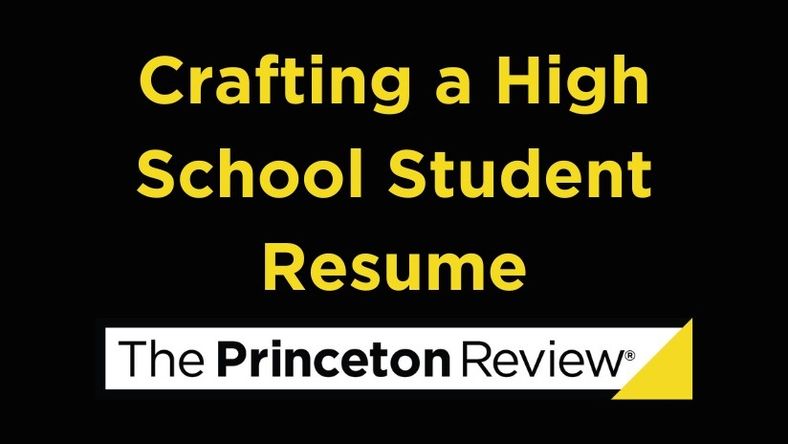

Think resumes are only for job seekers? Think again. A high school student resume gives colleges a snapshot of your accomplishments, extracurriculars, hobbies, and work history. They can also be a useful tool for prepping for a college interview or to give to the teachers who are writing your letters of recommendation .
Not sure how to get started? Follow our tips for crafting a standout resume for college and scholarship applications.
Any of the sections below could appear on your resume for college applications. Pick an assortment that works for you!
Some colleges and scholarship committees request or recommend that you include a high school resume with your application materials. (But don’t submit a resume if they don’t ask for one—following instructions is a key application strategy.) Bring your resume to college interviews and give copies to your college counselor and teachers so that they can write you the strongest possible recommendation letter.

Pare down the activities you showcase to the most brag-worthy and most representative of you as a candidate. Do colleges need to know that you were on the field hockey team for one semester in Grade 9? Probably not. The standard rule of thumb is to stick to one or two pages.
When deciding which activities and accomplishments make the cut, keep in mind that colleges would much rather see you excited about one or two key experiences than sporadic involvement in 20 clubs. If having an after-school job limited your ability to participate in clubs or sports, make sure your resume plays up your work responsibilities, training, and on-the-job skills.
The details are what set a resume apart from a list of extracurriculars on a standard college application. For example, when describing your involvement in the French Club make sure to include:
Use your high school resume to show colleges something new. If your devotion to photography didn’t make it on the application but is a big part of who you are, then showcase your photography cred on your resume.
Evaluate and improve your SAT score.
Make your resume easy to scan. Divide information into sections with clear headings, bulleted lists, and a consistent font. Use a system of organization that works for you. (Chronological, by importance of activity, or by time commitment are a few options.) Don’t forget to proofread !
Colleges know how to spot inconsistencies in your high school student resume, and they won’t hesitate to call your counselor to verify information that doesn't seem right. So don't tell them that you have practice for the school play for 30 hours per week—unless drama club is somehow your full-time job!
For more than 40 years, students and families have trusted The Princeton Review to help them get into their dream schools. We help students succeed in high school and beyond by giving them resources for better grades, better test scores, and stronger college applications. Follow us on Twitter: @ThePrincetonRev.